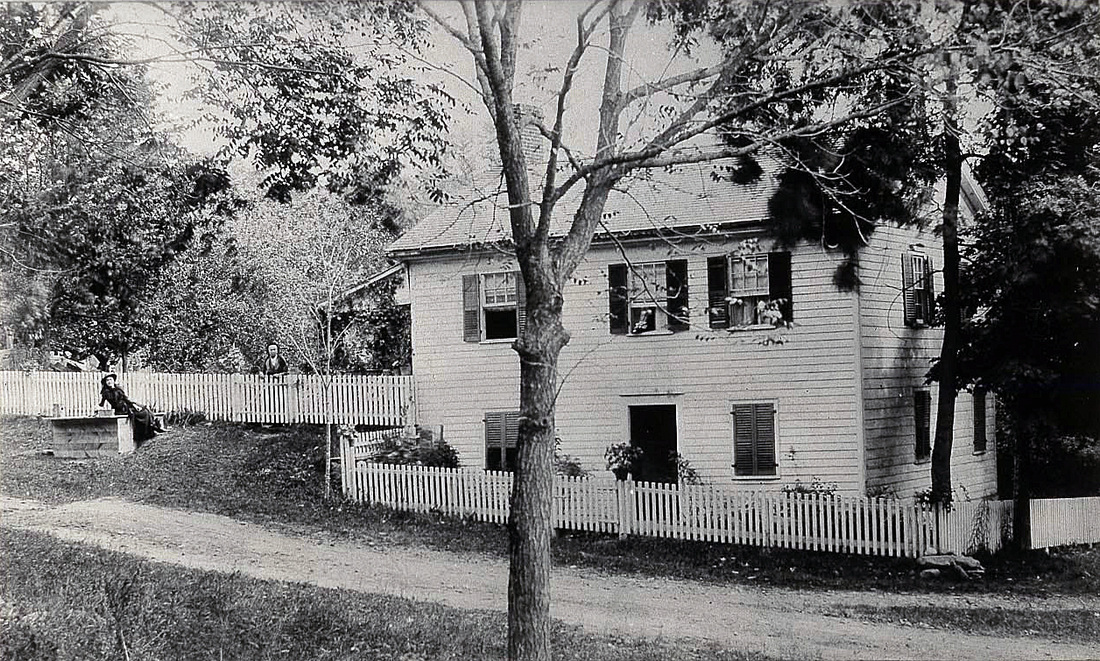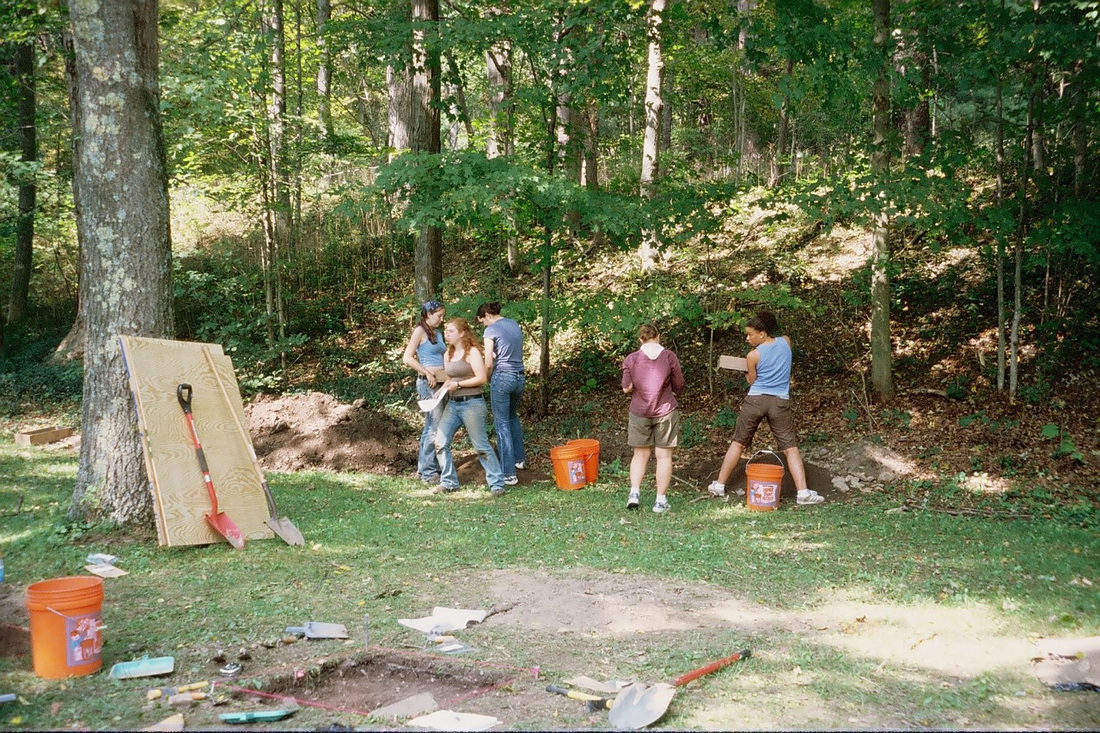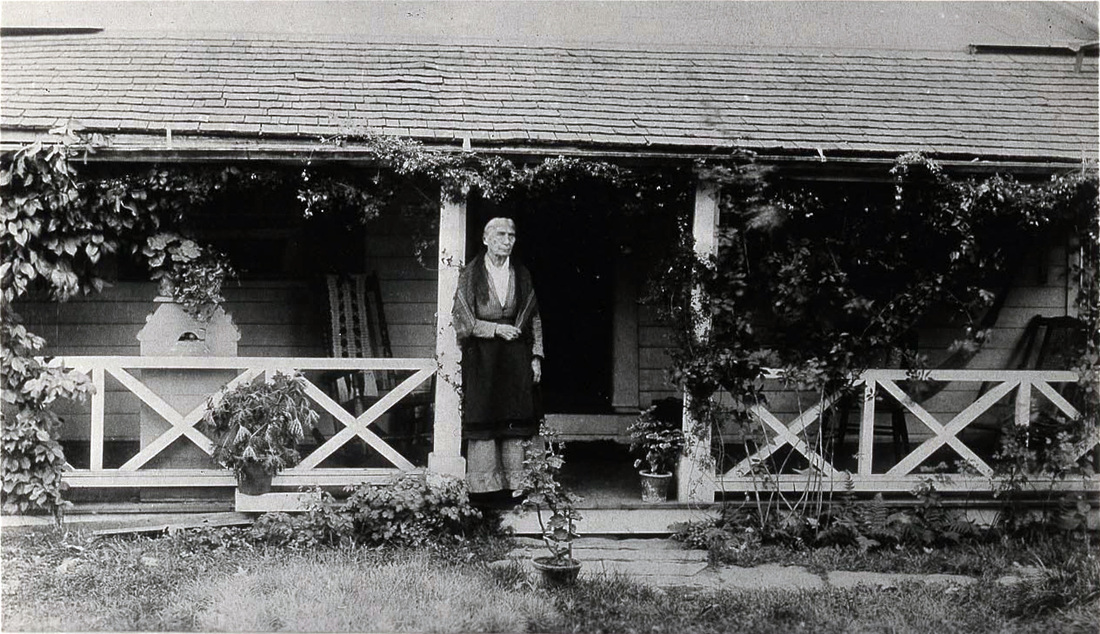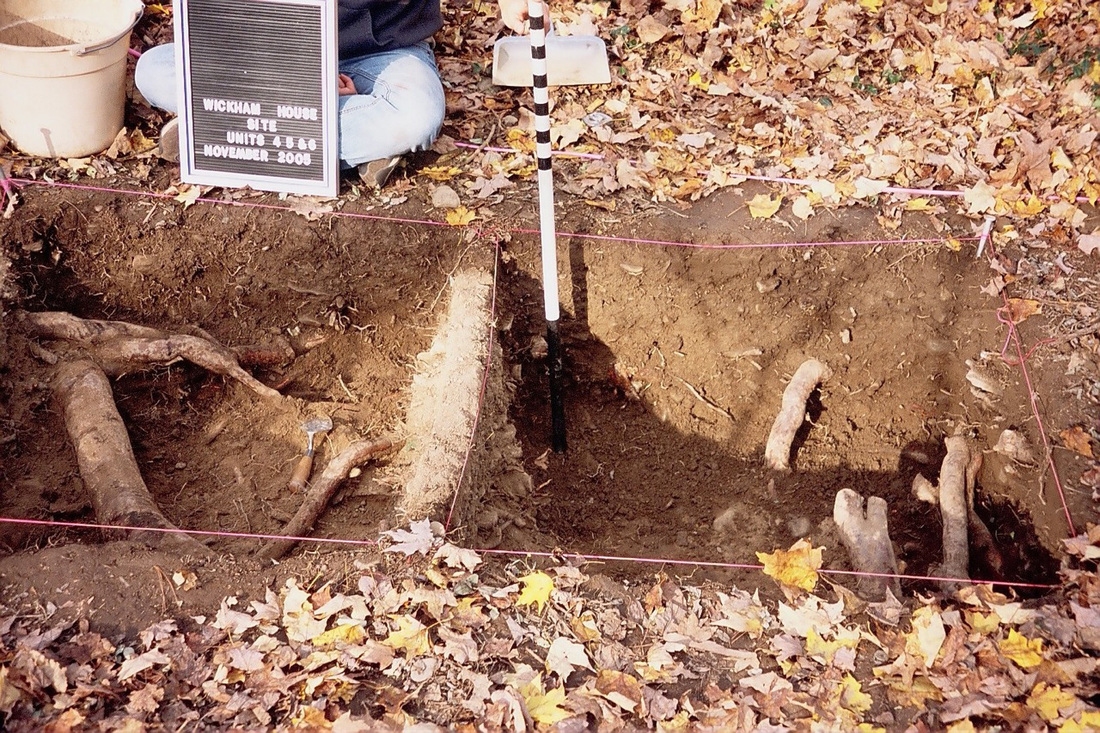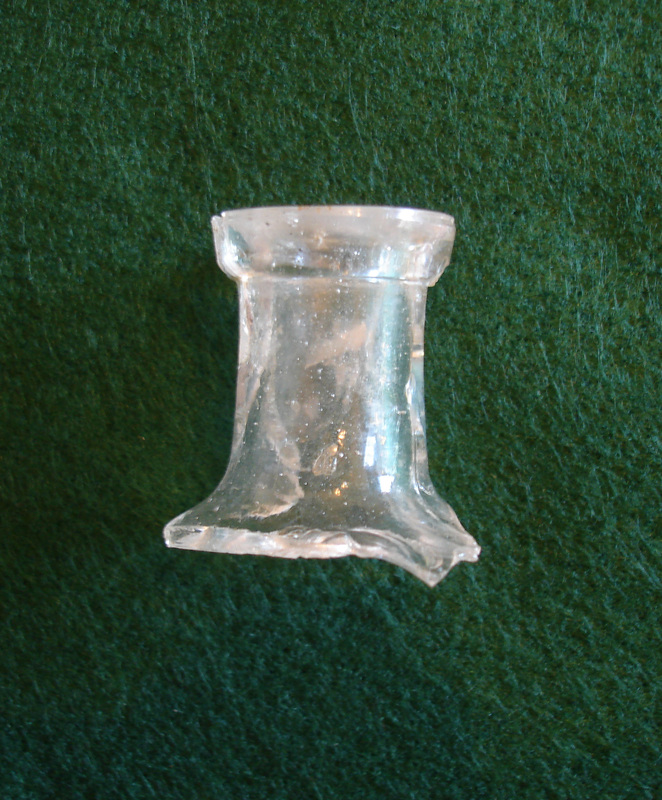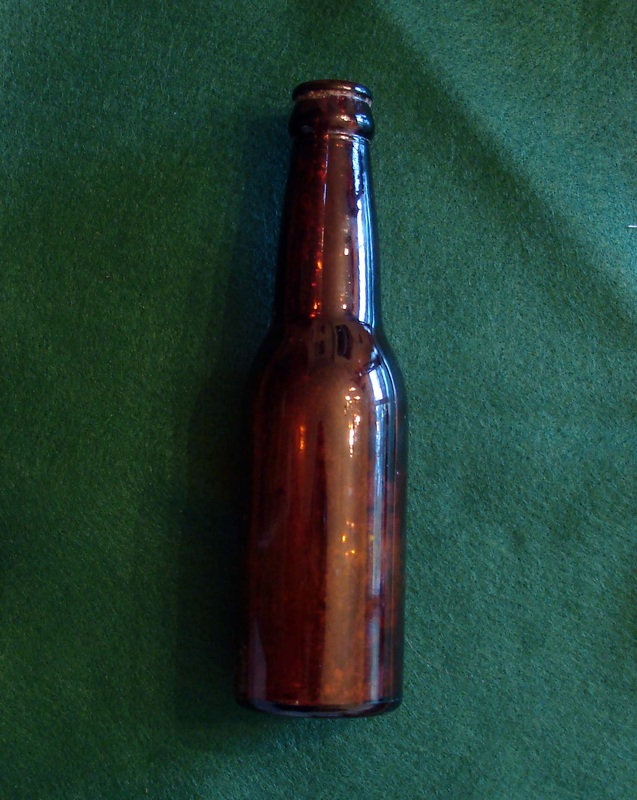The Wickham House - Home of Enfield Fall's Tourism Pioneer
Robert and Henrietta Wickham first came to Enfield Falls in the early 1830s during a visit with friends in the area. Greatly impressed with the spectacular waterfalls and gorges, the Wickhams bought a small parcel of land from Gilbert Budd in 1833. Building a frame house on the land, Robert and Henrietta lived a modest middle-class lifestyle for the next fifteen years. In 1847, the Wickhams decided to get into the tourism business and began buying up much of the gorge that makes up the present-day park and then they planned to open a hotel. In 1852, tragedy hit the family when Robert was thrown from a horse and suffered a crippling injury from which he never fully recovered. Henrietta was now the sole supporter of her family, which included her daughter Nettie. In 1853, Henrietta opened a hotel 1853. In 1856, after the successful start of her new hotel, Henrietta Wickham purchased the house (pictured above) from Albert Chapman. She converted the building from general store into a home for her family and lived in it for decades. As a woman in the 19th century, roles outside of those of housewife were severely limited. Becoming a successful and respected business owner was no small feat. Nettie Wickham followed the strong role model of her mother and was one of the first women to graduate from Elmira College in the 1860s. Henrietta Wickham finally retired from the hotel business in 1868 and lived the remainder of her life in her home at Enfield Falls.
In the 1920s, when Enfield Falls was being converted into a state park, the Wickham house was torn down. The original grade of the hillside behind the Wickham house was significantly changed from the grade of the hill seen in the picture above. A 1935 flood left several feet of stones, gravel, and mud where the house foundation once stood. The park staff removed some of the debris and graded the site creating a gently sloping hillside. When the house was built, the first floor was constructed slightly into the side of the hill to help it stay cooler in summer months while it would remain warmer in the cold of winter. Archaeologists investigating the former house site found artifacts in the backyard of the Wickham house but did not locate the foundation. Most homes in Enfield Falls had a simple stone foundation with a crawl space. Archaeologists concluded that the foundation of the Wickham House had been either been destroyed by the grading that occurred when the hamlet was converted into a park or buried by debris from the 1935 flood.
In the 1920s, when Enfield Falls was being converted into a state park, the Wickham house was torn down. The original grade of the hillside behind the Wickham house was significantly changed from the grade of the hill seen in the picture above. A 1935 flood left several feet of stones, gravel, and mud where the house foundation once stood. The park staff removed some of the debris and graded the site creating a gently sloping hillside. When the house was built, the first floor was constructed slightly into the side of the hill to help it stay cooler in summer months while it would remain warmer in the cold of winter. Archaeologists investigating the former house site found artifacts in the backyard of the Wickham house but did not locate the foundation. Most homes in Enfield Falls had a simple stone foundation with a crawl space. Archaeologists concluded that the foundation of the Wickham House had been either been destroyed by the grading that occurred when the hamlet was converted into a park or buried by debris from the 1935 flood.
Archaeology Studies of a Hotel Proprietor
|
In spring of 2005, Professor Baugher and students excavated ten shovel tests in the rear yard of the Wickham House site. They found fragments of 19th century ceramics, glass, and nails. In the fall of 2005, the archaeologists put in seven 3ft. by 3 ft. excavation units. Right at the edge of Henrietta Wickham’s back yard was a line of trees that marked a 19th road leading to Henrietta Wickham’s Enfield Falls Hotel. Unfortunately, the tree roots now extended throughout Henrietta Wickham’s backyard as seen in the photo. Prior to beginning excavations, the archaeologists agreed to a request by the park staff not to cut or damage any of the roots of these historic trees. Due to the size of the trees, the size of the roots were frequently very large and often too big to dig around. Therefore, the excavation in the various units was often ceased whenever the archaeologist uncovered the tree roots.
|
Archaeological research at Enfield Falls expands beyond examination of the material culture unearthed during the course of excavations. We know from the documentary record, for example, that Henrietta Wickham lived in this home from 1856 until her death in 1892. In addition to written documents archaeologists have also examined the photographic record. Thanks to the invention of photography in the mid-19th century there is an abundance of photographic records of Enfield Falls. One such photograph is this one of Henrietta Wickham standing on the porch of her home. Initially it was believed that the plants growing up the supports and along the gutters of the porch were just decorative vines. However, closer examination by a horticulture specialist revealed that the vines are hops plants. Hops is one of the ingredients used in brewing beer. It is probable that Henrietta used the hops when brewing beer for sale to patrons of her hotel.
|
The artifacts also provide in a glimpse into life in Henrietta Wickham’s home. She used kerosene lamps to light her home. She used stoneware and yellow ware mixing bowls and baking dishes for food preparation and cooking. Henrietta Wickham’s table was set with lovely blue transfer-printed dishes from England. She even had porcelain teacups. The glass bottle fragments and stem of a wine glass indicate that she served wine and beer in her home. The clay smoking pipes fragments may have belonged to her son-in-law, James Wilder who along with his wife Harriet was frequent visitor. In the late 19th century, it was considered improper for middle class women to smoke pipes.
|
Among the types of artifacts found were several intreguing bottles. The brown bottle here was made in a mold with an applied lip. Bottles of this type had the body, shoulder, and neck made in a mold. After being removed from the mold, a hand-made lip was applied to the top of the bottle. Bottles were manufactured this way from the 1870s to 1903. After 1903, the manufacture of bottles became more sophisticated using machine-made molds. The body, shoulder, neck, and lip could now be made using a single mold.
|
In addition to bottle glass that could have held various alcoholic and non-alcoholic beverages, archaeologists also found bottle glass associated with medicine. This clear glass neck and lip are from a medicine bottle. During the 19th century a wide variety of patent medicines were available. Many of these medicines contained alcohol in various amounts. Like the brown bottle depicted above, this medicine bottle was mold-made with an applied lip indicating it dates between the 1870s to 1903.
|
